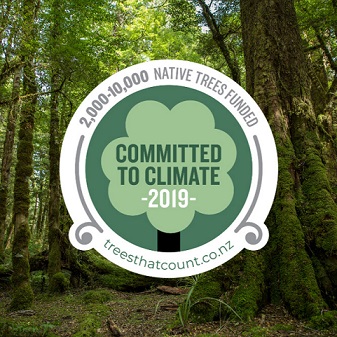Wednesday, 5th June is World Environment Day, and while many of us might be feeling smug that New Zealand is still a country where our forests and wildlife thrive, a recent report reveals that appearances can indeed, be deceiving.
The damning Environment Aotearoa 2019 report released by the Ministry for the Environment in April revealed that our country’s biodiversity is under serious threat with close to 4000 native species already at risk or facing extinction.
Among them are one of the rarest birds in the world – the kākāpō – a large, nocturnal, flightless parrot which is still at extremely low numbers of 142 despite dedicated efforts of conservation groups.
And our native trees and plants look set to fare no better. Kauri dieback disease is killing one of Aotearoa/New Zealand’s taonga – our unique kauri forests which grow throughout the upper North Island. Our pōhutukawa, mānuka, kānuka and rātā are also facing a new threat in the form of myrtle rust, a disease that arrived on shores in 2017 which is capable of infecting entire species.
So what can be done to save our native birds and forests? And is there something that every New Zealander can do to make a difference?
Adele Fitzpatrick, CEO of charity programme Trees That Count – of which The Tindall Foundation has generously invested into, and The Warehouse Group is also supporting, believes we already have the technology at our fingertips to help restore biodiversity and protect our indigenous wildlife, in the form of our very own native trees.

“New Zealanders love our native trees. They are not just providing habitats for our native species, they’re providing places for our children to play. Our native trees affirm for us what it means to be New Zealanders, they’re part of what makes us so proud to live in this country.
We have a short window in which to make a difference, otherwise our indigenous species will be lost forever. Protecting native trees and restoring wildlife corridors around the country is a powerful way we can continue to provide healthy ecosystems for our bird taonga.
Planting native trees is a viable, long-term solution for stabilising our climate and building resilient ecosystems. Introduced species already threaten our native trees and plants, and if they are under threat so are the species that seek them for food and shelter.”
So, what can you do to make a difference?
- Plant a native tree, and take the time to find something eco-sourced to succeed in your area. Local councils offer guides on what's best to plant depending on your region.
- Volunteer your time with a local planting group. There are planting groups and projects happening all over the country with people working to restore areas under threat while also creating brand new wildlife corridors.
- If you can’t plant a tree, you can fund or gift one. Trees That Count connects funded trees with planting groups around the country, helping them achieve more with their projects. You can also set up tree registries to rally friends and family to donate trees for a good cause, or for birthdays and weddings.
Trees That Count is working with New Zealanders across the country to plant millions more natives. They’re providing community planting projects the support they need to make a real impact at restoring, and growing, precious wildlife corridors around the country. Join us and help plant millions more native trees.
Note: This piece was written by Trees That Count, an organisation working to plant millions more native trees. The Warehouse Group is a proud partner of the organisation, recently earning the Hiriwa mark. Learn more about the initiative here.